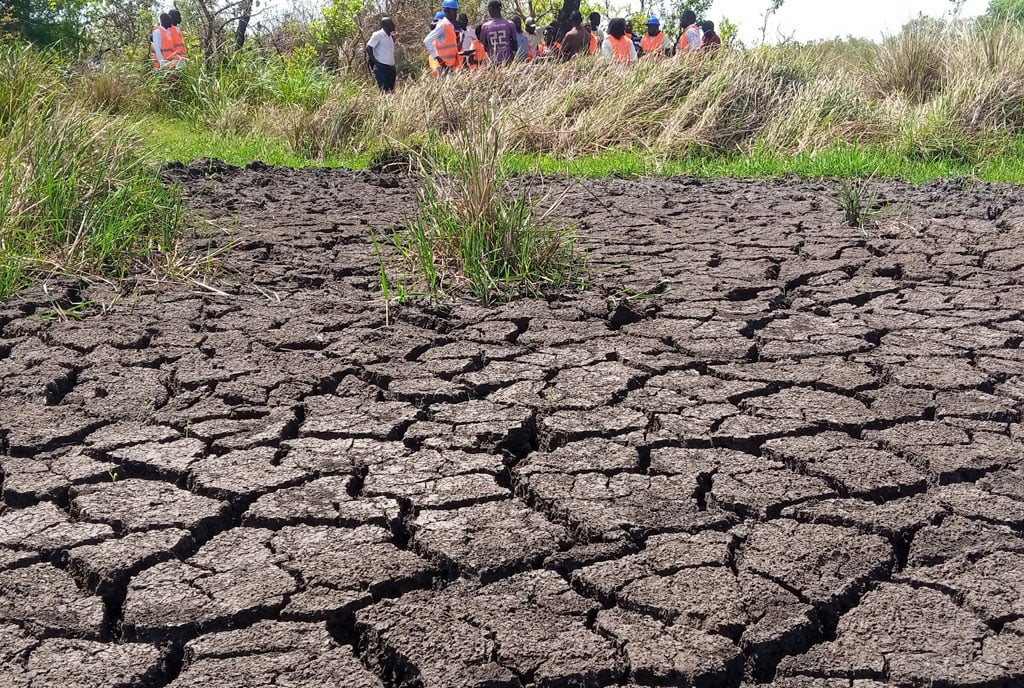Drought, heatwave leave Pader farmers desperate

This picture taken last February 21, 2024 shows how the heatwave, coupled with drought, has destroyed a swamp in Pader District. PHOTO/BILL OKETCH
What you need to know:
- The changes in weather patterns have affected agricultural production.
While recent rain could have spared farmers in some districts in central Uganda from the worst, harsh conditions fuelled by climate change, farmers in Pader District are worried over the drought that is threatening crop yields, this newspaper has learnt.
Mr Seydou Adolatona, the Pader District production officer, said their problem is not the fertility of the soil.
“The soil is still fertile and virgin but our problem is water to irrigate it,” he told this publication in an interview last Wednesday, adding that livestock are on the verge of dying of thirst because severed streams have all dried up.
“Usually around this month of February, the whole place is always dry and this affects both agricultural production and animal rearing but this year has been extreme,” he said.
Ms Susan Abinya, the Pukor Sub-county chairperson, said northern Uganda has only two seasons for farming, “which start from April to September, and if we are lucky and it rains up to October, where our cultivation period ends”.
However, she said the changes in weather patterns have affected agricultural production.
“We used to plant cash crops such as cotton and sesame but because of the changes in weather patterns, the production has drastically gone down. These days, a household can hardly generate Shs1m in a farming season, unlike in the past where a household would generate more than Shs3m through the cultivation of cotton, groundnuts, sesame and other crops,” she said. She added that even with the extreme weather conditions, farmers have not given up.
“We produce drought-resistant crops like cassava, pigeon peas, millet, and sorghum,” he said.
Ms Milly Aporo, a resident of Kapel Village, Kal-Angore Parish in Pukor Sub-county, said they are trekking more than 17 kilometres in search of water for their animals.
Nonetheless, the Pader Resident District Commissioner, Mr Milton Odongo, said the Ministry of Water and Environment last week launched the construction of water for production facilities for better access to water for livestock.
The initiative, funded by the government to the tune of more than Shs500m, involves the construction of a valley dam, with a capacity of 20 million litres.
This project also involves the construction of pump/guard house and steel tank towers, with each of the two tanks having a capacity of 10,000 litres and construction of two cattle troughs.
“Upon its completion, the water facility is expected to benefit thousands of goats and heads of cattle in the area,” Mr Odongo said.
Mr Charles Bwire, the regional centre north production officer, said the project will provide water for irrigation to smallholder farmers.
“We are looking at activities such as livestock watering. We shall have some tap stands for water supply but limited to home use because this is not treated water,” he said.
“This water will also be used for rural industries like brick laying. We shall have some limited irrigation for those who are interested in some horticulture activities and then we shall also have aquaculture,” he added.




